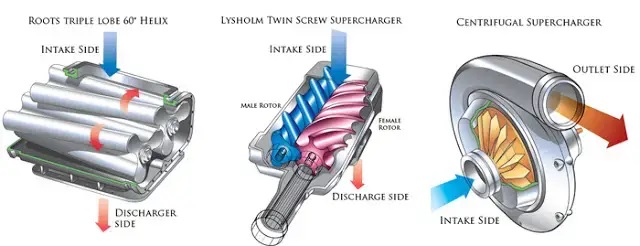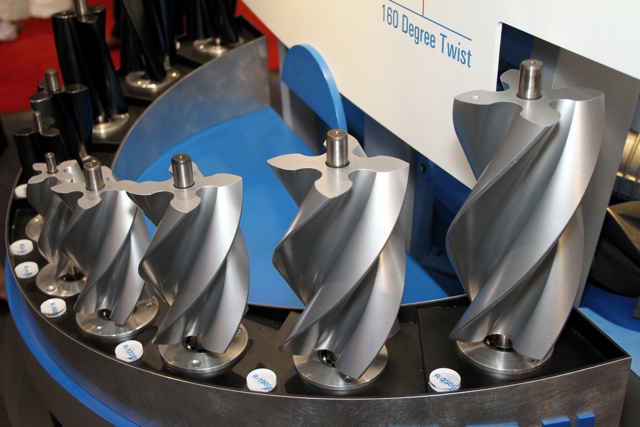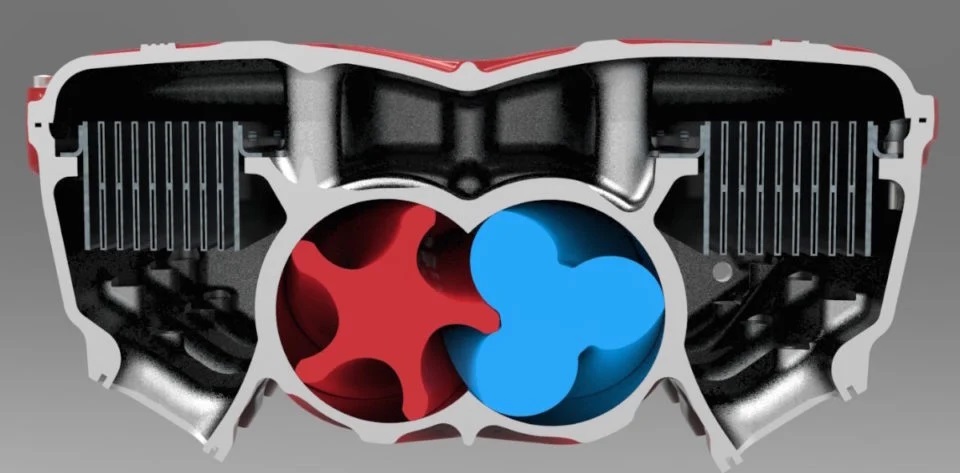Two highly regarded companies that have been providing positive displacement superchargers for some time now. On a daily basis we see on social media the questions asked on whats the difference or which supercharger system is better, we're here to hopefully breakdown the difference between the two.

Roush Superchargers and Whipple Superchargers are both aftermarket forced induction systems designed to increase the power output of an internal combustion engine. While they serve the same purpose, there are several differences between the two.
- Manufacturer: Roush Superchargers are produced by Roush Performance, a company founded by Jack Roush, a well-known figure in the automotive industry. Whipple Superchargers, on the other hand, are manufactured by Whipple Industries, which specializes in high-performance superchargers.
- Design and Technology: Roush Superchargers typically use a positive displacement design, specifically a Roots-type blower. They provide instant low-end torque and are known for their linear power delivery throughout the RPM range. Whipple Superchargers, on the other hand, utilize a twin-screw design. This design allows for increased airflow and efficiency, resulting in higher horsepower gains and improved throttle response.
- Efficiency and Power: Whipple Superchargers are generally regarded as more efficient and capable of producing higher power gains compared to Roush Superchargers. The twin-screw design of the Whipple allows for greater airflow and lower air temperatures, resulting in increased power output. However, the actual power gains will depend on various factors such as the specific model of the supercharger, the engine it's installed on, and the supporting modifications.
- Warranty and Support: Both Roush and Whipple offer warranties for their supercharger systems, but the specific terms and conditions may vary. It's important to review the warranty information provided by each manufacturer to understand the coverage and any potential limitations.
- Availability and Application: Roush Superchargers are typically associated with Ford vehicles, particularly Mustangs and F-150 trucks, although they may offer systems for other models as well. Whipple Superchargers, on the other hand, have a broader range of applications, including various Ford, GM, and Dodge vehicles.

Ultimately, the choice between a Roush Supercharger and a Whipple Supercharger depends on your specific requirements, budget, and the intended use of the vehicle. It's recommended to research and compare the specific models available for your vehicle, consider their performance characteristics, and consult with experts or enthusiasts who have experience with these superchargers to make an informed decision.

So whats the difference between the two in terms of design?
Twin-screw superchargers and Roots-type superchargers are two common types of positive displacement superchargers used to increase the power output of an internal combustion engine. Here are the key differences between them:
- Design: Twin-screw superchargers feature two interlocking, counter-rotating screws that compress the incoming air/fuel mixture. The design of the screws allows for smooth and efficient airflow, resulting in higher efficiency and improved power delivery across a wide RPM range. Roots-type superchargers, on the other hand, use two rotors, resembling lobes, to move air from the intake to the exhaust side. This design is simpler and generally provides good low-end torque, but it may be less efficient at higher RPMs.
- Airflow and Efficiency: Twin-screw superchargers typically offer higher airflow and efficiency compared to Roots-type superchargers. The twin-screw design promotes better air compression, which leads to improved volumetric efficiency and higher power gains. This can result in better throttle response and overall performance.
- Power Delivery: Twin-screw superchargers are known for providing linear power delivery throughout the RPM range. They offer instant boost and excellent low-end torque, making them suitable for street and track applications. Roots-type superchargers tend to offer strong low-end torque but may exhibit a tapering-off effect at higher RPMs, which can limit top-end power potential.
- Heat Generation: Twin-screw superchargers generally generate less heat compared to Roots-type superchargers. The intermeshing screws in twin-screw superchargers produce less frictional heat, resulting in lower discharge temperatures. This can help maintain better air density and reduce the risk of detonation, allowing for more aggressive tuning and potentially higher power levels.
- Packaging: Roots-type superchargers are typically more compact and can be easier to fit in tight engine bays due to their simpler design. Twin-screw superchargers may require more space for installation due to their larger size and additional components.
It's important to note that the specific performance characteristics and power gains of superchargers can vary depending on the manufacturer, design details, and supporting modifications. When considering a supercharger for your vehicle, it's recommended to research and compare different models, consult with experts or enthusiasts, and consider your specific needs and goals to make an informed decision.

